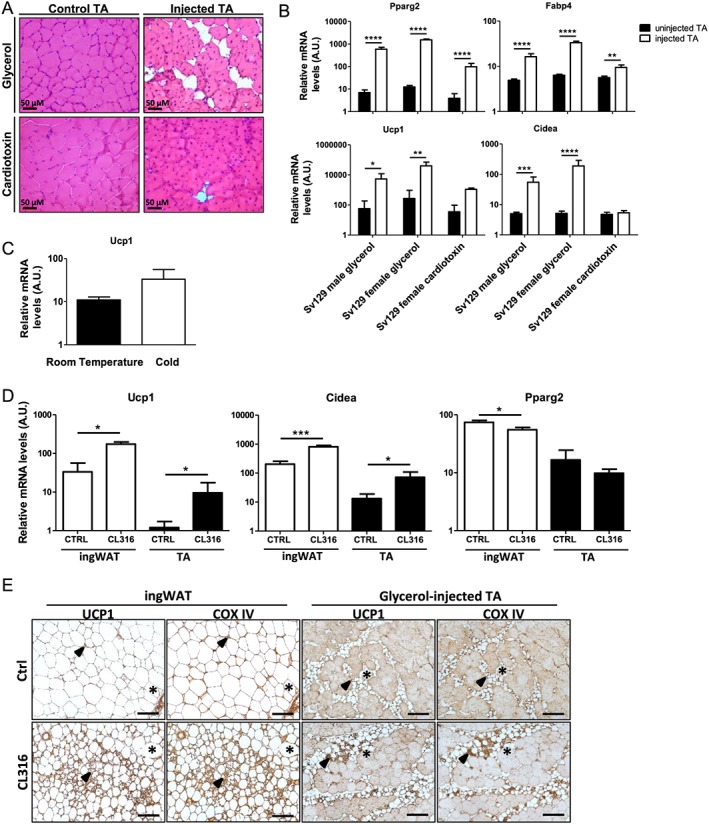Figure 1.

Glycerol (GLY), but not cardiotoxin (CTX), induces intramuscular adipogenesis and uncoupling protein 1 (Ucp1) expression in skeletal muscle, which responds to treatment with a beta 3‐adrenergic agonist. (A) Haematoxylin and eosin staining of tibialis anterior (TA) cross sections 4 weeks after intramuscular injection of CTX or GLY. (B) mRNA levels of general (Pparg2 and Fabp4) and brown (Ucp1 and Cidea) adipocyte markers in TA 4 weeks after intramuscular GLY injection in 129S6/SvEvTac (Sv/129) male and Sv/129 female mice and 4 weeks after intramuscular CTX injection in Sv/129 female mice, n = 5 mice at 15 weeks of age per group. *P < 0.05, **P < 0.01, ***P < 0.001, and ****P < 0.0001, repeated measures two‐way analysis of variance. (C) Ucp1 mRNA levels in TA muscles of uninjected Sv/129 male mice kept at room temperature or exposed to cold (8°C) for 1 week. n = 5, unpaired Student's t‐test. (D, E) Four weeks after intramuscular GLY injection in the TA muscles, mice were treated with daily injections of CL316,243 hydrate (CL316) for 5 days, and TA muscles were excised for quantification of Ucp1, Cidea, and Pparg2 mRNA levels and immunohistochemical analysis of paraffin sections; inguinal white adipose tissue (ingWAT) was used as a control. n = 5 Sv/129 female mice at 17 weeks of age per group. *P < 0.05 and ***P < 0.001, unpaired Student's t‐test. For (B–D), mRNA levels were measured by quantitative reverse transcription PCR. Results are shown as mean and standard error of the mean of mRNA levels normalized to 18S rRNA levels, in arbitrary units (A.U.). In (E), ‘*’ indicates a corresponding area on consecutive sections, and arrows indicate UCP1+/cytochrome c oxidase subunit IV (COX IV)+ adipocytes. Scale bar = 100 μm. CL316, CL316,243 hydrate.
